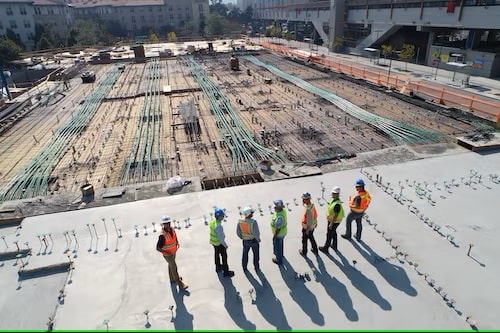Construction Technology for Error-free Quantity Take-off
The phrase “quantity takeoff” is puzzling in construction. But no need to worry; we’ll be discussing what quantity take-off is, how it differs from a materials takeoff, and how you can do a takeoff quickly and accurately.
What is a quantity take-off in construction?
In construction, a quantity takeoff is a checklist of all the physical materials essential to accomplish a job and their costs. It does not consider permits, labor costs, overheads, equipment, or other incidentals. ‘Takeoff’ suggests taking information from drawings, blueprints, or models and ‘quantity’ refers to the amount of materials.
The importance of high-quality estimating is no mystery—it’s been the unsung icon of the preconstruction strategy since its beginning. According to a survey conducted by top software companies, one in four construction companies may go out of business if they make just two or three incorrect estimates.
But the quantity take-off process has been historically disconnected, generally involving numerous systems across teams, various tools, tactics, and multiple data sets—often outdated. These ineffective practices put estimators in a position where collaboration can be complex. Unfortunately, small nuances can be easily neglected, and valuable money, time, and opportunity can be wasted.
Technology trends can impact companies to strengthen estimation efforts and pave the way to error-free quantity take-off.
- Automating takeoff process
Automation is becoming prominent in almost every aspect of construction. However, automation in takeoff remains one of the most powerful levers for estimators. Automating redundant tasks during takeoff helps reduce time spent running takeoffs, enhances accuracy, and mines valuable insight to better understand projects.
Through automation, estimators can spend less time manually measuring data sheets, models, and schedules—and instead spend more time loaning expertise to project managers and supervisors to help win more business.

- Choosing cloud-based collaborative tools
Multiple quantity takeoffs feature a dispersed team of estimators across numerous companies lending their expertise in different areas, whether steel, concrete, or rebar.
These various players need to cooperate efficiently and ensure accuracy while operating from the most up-to-date data sets; a quality only cloud-based cooperation can provide.
The adoption of cloud-based technology in construction has been steadily increasing over the past decade, with over 85% of contractors using cloud solutions.
Still, there’s no question that the pandemic has forced the fast-forward button. Out of necessity, teams must embrace new methods for collaboration and learn new techniques to work together remotely and more efficiently.
- Stay updated in real-time
Version management has always been challenging for construction teams, but it’s an issue that technology (e.g., the cloud) has handled head-on. Working from a common data source is priceless during the estimation process, and assists teams avoid the standard, expensive trap of working from outdated information.
This ensures that estimators instantly understand the impact of the latest changes, operate from shared project information, and can manage changes in real time.
- Using 2D and 3D designing tools
Historically, quantity take-off have been executed from two-dimensional plans, but the introduction of three-dimensional quantity takeoffs has offered priceless new insights for estimation teams and owners alike.
Unfortunately, most teams are stuck executing takeoffs in 2D. This is because numerous important details only exist in 2D sheets, signifying contractors aren’t able to leverage the intuitive visualization capabilities of the model.
However, countless modern tools allow estimators to perform takeoffs in both 2D and 3D for the same project. This will enable contractors to visualize and quantify most items in 3D easily, ensuring all the required 2D details are available.
With this unique approach, contractors can make discussions with owners much easier, providing a more holistic visualization of how the takeoff is trending.
- Developing a solid audit trail
As we know, documentation is one of the most crucial aspects of construction and often doesn’t get the heed it deserves. According to a report, poor data and information control cost the construction industry over 31.3 billion dollars annually.
And with several crucial decisions being made during the preconstruction phase, developing a solid audit trail throughout the quantification process is essential. A clear history of modifications and quantities reduces post-completion conflicts and leaves no questions about where quantities come from.
Bottom Line
A quantity takeoff is crucial for understanding a construction project’s overall scope and budget. Using the right technology and strategy, you can gain a practical understanding of what will be needed to achieve the end results of a project.
With the right set of tools, one can improve the accuracy of a quantity takeoff as more realistic features are involved in these models. You deal with a 3D model that adequately displays the construction requirements – giving you more precise data.
Getting a suitable takeoff done will improve your bidding process, save money, and overlook rework or speed bumps in the construction process. Thus, you need to make sure that you get it straight.
